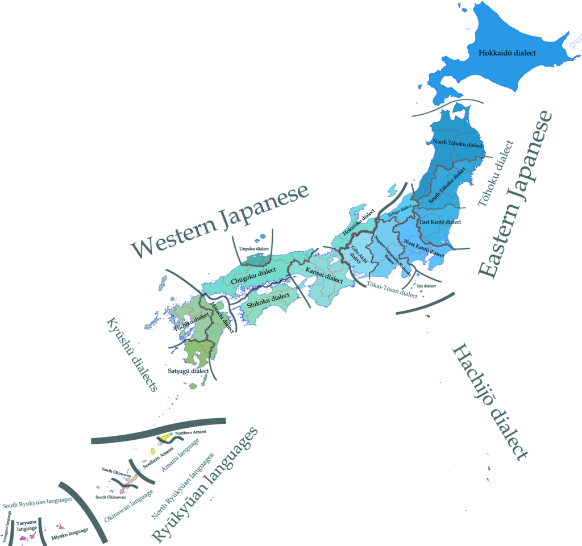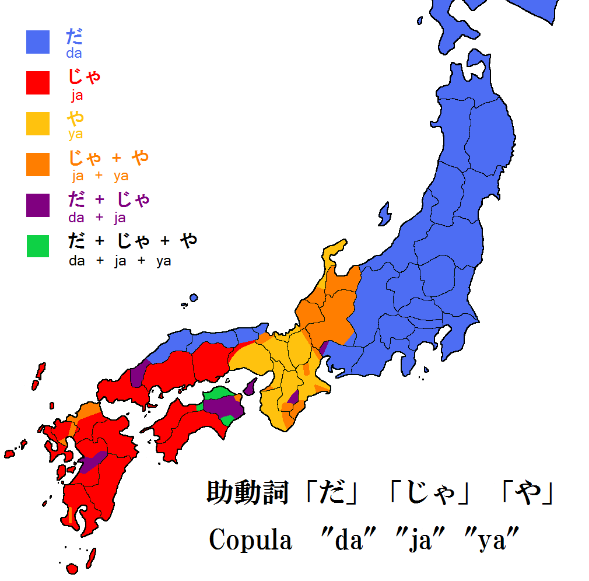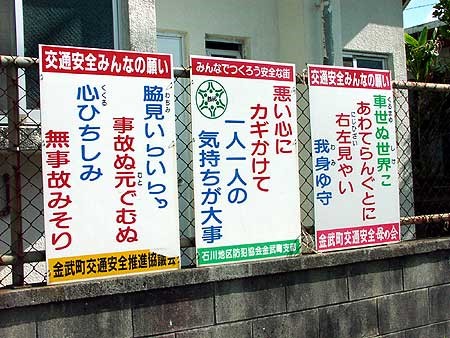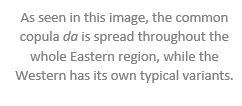Primary dialects of the Japanese language
 Map of Dialects
Map of Dialects
Like in mostly any language spoken in a given country, there are also dialects in the Japanese language. The Japanese dialects are mainly divided in two, namely Eastern and Western, divided geographically. These variants of the language have been confirmed since the Old Japanese era, and since the late 19th century a standardized variant of the language came into existence. Nowadays this standardized version is widely spread throughout the nation and regional varieties have been declining due to education and media. As a result, the regional varieties are now seen as “nostalgic”, and a way of identifying oneself.

When classifying Japanese dialects, the primary
clades are as previously stated, the Eastern and Western
dialects. While there are many variants to discuss, the main
distinction can be made between the Tokyo type, which is
basically the standard language, and the Kyoto type.
A simple depiction of the differences in certain vocabulary
between the two can be seen in the following table.
| Tokyo | Kansai | English |
|---|---|---|
| Chigau | Chau | Different |
| Dame | Akan | No good |
| Wakaranai | Wakarahen | I don’t understand |
| Tottemo | Meccha | Very |
| Baka | Aho | Idiot |
| Arigatô | Ôkini | Thank you |
| Hontô | Honma | Really |
Historically, nearly every village in the Kansai area had a style of speech which differed somewhat from its neighbors. It was once possible for well-travelled people to identify the particular area from which a speaker came. Due to the increasing influence of the Tokyo and Kanto dialects over the last four hundred years, the intraregional differences have been declining across all of Kansai. Nevertheless, citizens of each major city and prefecture still take some pride in their particular dialectical variation, and this pride has preserved a number of differences between each area in the region.
The Kansai dialect is not a single dialect, but a group of related dialects of the region. Each major city represents a particular dialect, such as the Kyoto dialect, Kobe dialect, Nara dialect, etc. Since Osaka is the largest city of the region, and since its speakers have gained the most media exposure in the last century, non-Kansai dialect Japanese speakers tend to associate the dialect of Osaka with the entire Kansai region. Thus anyone habitually saying akan or honma to someone from Tokyo for example, is probably going to be labelled as an Osaka dialect speaker whether they are from Osaka or not.

Aside from the main two distinctions made above, one more variant worth mentioning is Okinawan. Okinawan Japanese is the most spoken variant on the Ryukyu islands, south of Japan. Okinawan has some influences from the traditional Ryukyuan languages, and also contains unique American English loanwords due to the United States administration after the Battle of Okinawa. Okinawan Japanese can be considered as a language on its own but it is also considered a Japanese dialect in Japan. Okinawan is so different that it is hardly intelligible on the rest of the Japanese archipelago. For example:
Okinawan:
-
汝や 沖縄口ー まっとうば、使りよお。
Naa ya uchinaaguchee mattouba, chikariyoo. -
Standard Japanese:
君は沖縄語を正しく使ってよ。
Kimi wa okinawago wo tadashiku tsukatteyo. -
English:
Please use Okinawan correctly.

